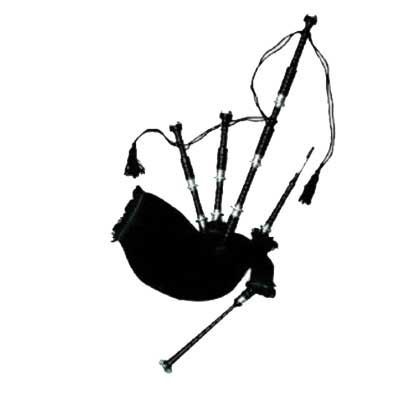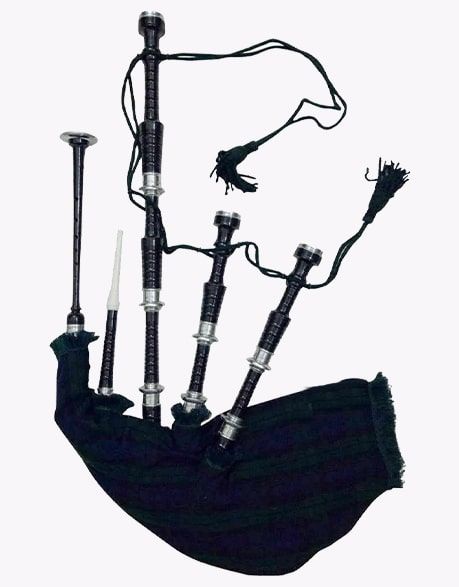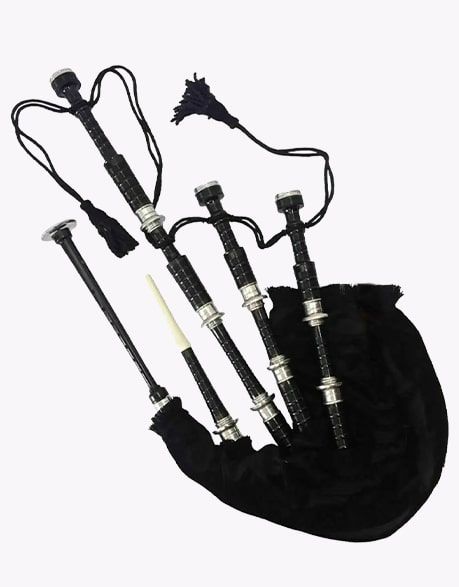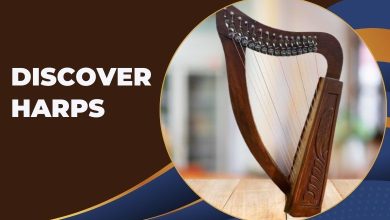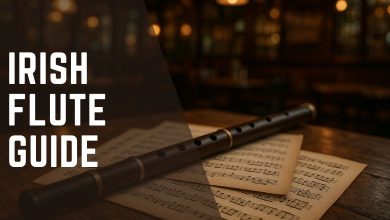Key Differences Between Scottish and Irish Bagpipes

All cultures have their own musical systems and some of them acquired global popularity. A prominent name among them is “Bagpipes,” and it is popular in the Highlands. A majority today affiliates it with Scottish traditions only, while it has equal acceptance in Ireland. The bagpipes in both countries have many differences that a majority may not be aware of. This guide is very appropriate for such people who are interested to know their dissimilarities.
Table of Contents
ToggleScottish vs. Irish Bagpipes: Key Differences
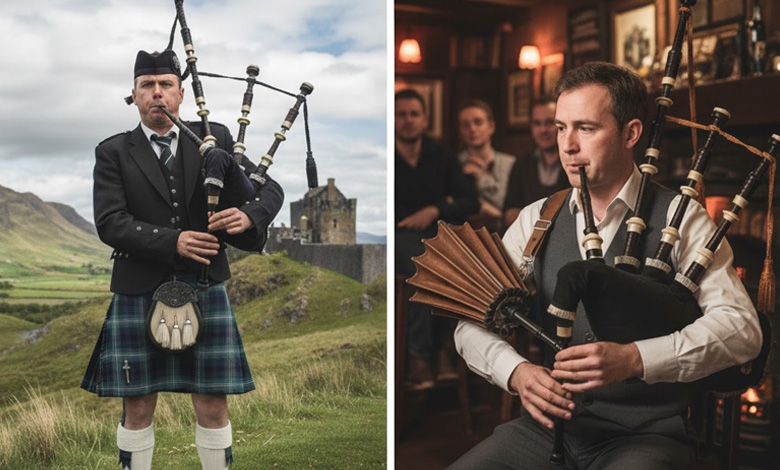
Scottis vs Irish Bagpipes
A majority, when they hear of the bagpipes, usually imagine it to be the same in Scotland and Ireland. In actuality, they differ in many domains, from their names to designs and sounds to playing techniques. Let’s discuss these uncommon aspects first, and then we will answer your questions.
Name and Type
Scottish Bagpipes: Scottish bagpipes are available in many types today. Thus, the most popular one is the Great Highland bagpipe. It also has many other types, including the Border pipes and the Scottish smallpipes.
Irish Bagpipes: Irish pipes are also known as “uilleann pipes” or “union pipes.” Bagpipes overall have 70 variations, but the only one used in Ireland is the union pipe. Irish people use them for soft and expressive sounds, adding smoothness in the atmosphere.
Design and Structure Compared
Scottish Bagpipes: Regarding the design and structural differences, we see musicians playing Scottish bagpipes in standing positions during festivals. Musicians blow air directly from their mouths. Scottish bagpipes usually have 3 drones.
Irish Bagpipes: Bagpipes having an association with Ireland are usually played in seated positions. They characterize two drones and a regulator to produce lighter notes. Likewise, they use a bellows to transfer air and it is an elbow-operated system to fill the bag.
Differences in Sound and Tone
Scottish Bagpipes: Scottish bagpipes are famous for producing louder sounds. That is why their use indoors is very limited. Besides the louder tone, their chanter allows for only 9 notes.
Irish Bagpipes: Irish bagpipes propose lighter tones and they are played both indoors and outdoors. The chanter can play chromatic notes. It means they can produce all notes that the white and black buttons of the piano create.
Contexts and Use
Scottish Bagpipe: Scottish bagpipes are common in traditional contexts and used in different events, including social, military ceremonies, and ceilidh.
Irish Bagpipe: When it comes to the use of bagpipes in Ireland, people there use them in folk, historical, and melodic tones.
Maintenance and Durability
Scottish Bagpipes: These woodwind instruments are considered more durable and easier to maintain because of their simple structure. The only chanter reed is easy to maintain, while the air blowing part is also not complex. However, you should tighten it after a specific tenure.
Irish Bagpipes: The story of Irish instruments is a bit different, as they have a complex system requiring more maintenance and cleaning time. In other words, it is more challenging than the mouth blowing system.
Different Playing Techniques of Bagpipes
Scottish Bagpipes: The playing techniques also make them pretty different from each other. Scottish pipes are played in a standing position only. The diatonic scale and the existence of 3 drones make the playing a bit complicated.
Irish Bagpipes: On the other hand, Irish instruments use bellows and are operated with elbows. These bagpipes have two drones, making things a bit easier to operate. Moreover, they allow for more smooth variations in tone, including vibrato and “shading” of notes.
Bagpipes Cost and Availability
Scottish Bagpipes: The Great Highlander bagpipes originated in Scotland, but they are globally popular now. Above all, they are cost-effective compared to others. The normal price of Bagpipes is somewhere $125.00 to $190.00, and they are easily accessible.
Irish Bagpipes: The accessibility of Irish instruments is a bit compromised compared to the ones used in Scotland. These instruments are very costly compared and they typically range from $3,000 to $10,000 or more.
Comparison Table
| Features | Scottish Bagpipes | Irish Bagpipes |
| Name and Type | Great Highland Bagpipes (most common) | Uilleann pipes (also called union pipes) |
| Playing Position | Played standing | Played seated |
| Air Supply Method | Mouth-blown | Bellows-blown and elbow-operated |
| Number of Drones | Typically 3 drones | Typically 2 drones + regulators |
| Sound and Tone | Loud, high-pitched, suited for outdoor use | Softer, expressive, suited for indoor use |
| Chanter Range | Diatonic scale, limited to 9 notes | Chromatic scale, capable of full piano range |
| Cost | $125 – $190, widely available | $3,000 – $10,000+, less accessible |
Which Bagpipe Is Harder to Learn: Scottish or Irish?
Learning every woodwind instrument requires effort and dedication. If we specifically highlight the learning hardship between Irish and Scottish bagpipes, the union pipes are more complex, especially for new learners. The complicated fingering system and operating with the elbow demands a high level of effort. Scottish bagpipes, on the other hand, have a simple system comparatively. The limited range of notes and convenient fingering system make it easier to play.
Explore The Utility Kilt Inventory to Buy Highland Bagpipes
The differences between Irish and Scottish bagpipes should be clear. It is time to find a reliable brand to purchase this musical instrument. Though many stores offer excellent services, you should opt for the one comprising a good inventory of woodwind instruments, including bagpipes, flutes, and lyre harps that are exceptionally made with cost-effective prices. We ensure, The Utility Kilt is the only brand offering excellence at the cheapest prices. Some of our products are listed below that are worth trying.
FAQs About Irish and Scottish Bagpipes
Why do bagpipes have drones, and how do they work?
A bagpipe drone is a pipe having a sliding joint for tuning. It also contains a reed which vibrates when the air passes through it. The function of the drones is to act as a harmonic foundation responsible for providing a continuity and eco-friendly tones contrasting with the changing notes of the chanter.
Are Bagpipes easy to learn from lyre harps?
Both of them have different playing techniques which decide the learning accessibility. You need to polish your blowing techniques, finger movements, and build your stamina to play a bagpipe. On the other hand, you have to control your fingers to produce notes while playing lyre harps. Thus, we can say bagpipes are not easy to learn comparatively.
What are the traditional materials to make conventional bagpipes? Did the instruments see any change comparatively?
Traditional bagpipes were sustainable as the construction of them took place with animal hides, and woods were common to make reed and chanters. Things are different now and synthetic materials such as Gore-Tex and plastic have become popular choices as they are durable and more affordable than conventional resources.
How long does it take to master the basics of each type of bagpipe?
Can I play my bagpipe solo or is it essential to be a part of a band?
What role do bagpipes play in Celtic funerals and weddings?
The Celtic culture influenced the traditions of Ireland and Scotland and it is a Celtic tradition to mark special days such as birthdays, weddings, and funerals. Interestingly, playing traditional music at these events is a common approach and surprisingly Highland music is incomplete with bagpipes.
